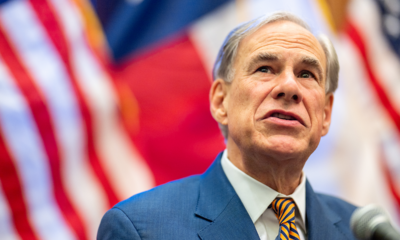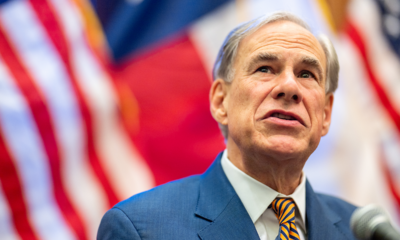News
Read the Justice Department’s Report

E. MPD Unnecessarily Escalates Encounters with Children.
We have serious concerns about MPD’s treatment of children and the lasting impact of
police encounters on their wellbeing and resilience. 42 During interactions with children
regarding minor issues, MPD officers escalate the encounters with aggressive and
demeaning language and, at times, needless force.
At times, MPD aggressively escalates encounters with children who have committed no
crime or where the child is a victim. In one incident, officers handcuffed and used force
against a 16-year-old Black girl who called MPD to report she had been assaulted.
Before arriving at the precinct to give a statement, officers handcuffed the girl after she
refused to give them her phone. When she became agitated and reactive, the officers
responded with insults and threats, telling her, “When [the handcuffs] do come off . . .
Ooh, I’m itching,” “I leave my gloves on when I fight,” and “If I gotta whip your ass, I will.”
After three hours, officers removed the handcuffs to reposition them. As she complained
that her hands were hurt and swollen and tried to move her wrists, the officers grabbed
her and pushed her face down onto the ground to handcuff her again. The girl was then
arrested and charged with disorderly conduct.
MPD has escalated interactions when enforcing laws that are intended to keep children
safe. After two Black boys (ages 15 and 16) ran from an officer who was citing them for
a curfew violation, officers demeaned the boys and threatened violence. When one boy
asked if they were going to jail, the officer responded, “If it’s my decision, hell yeah . . .
I’d have so much damn fun rolling your ass down to jail. I’d love doing that shit.” Another
officer threatened to assault the boys when he worried that he may have lost his MPD
mobile device during the foot pursuit: “I am fucking these little kids up, man… I am
fucking you all up, I just wanted to let y’all know that.”
MPD officers have mistreated children in crisis, even when it is clear the child has
significant disabilities. In one incident, a CIT officer threatened to take a 14-year-old
Black boy to adult jail because the boy ran away from home. The boy was diagnosed
with autism, ADHD, bipolar disorder, and developmental delays and had the intellectual
functioning of a four-year-old. The boy’s mother had called the police after the boy, who
had been released from a mental health facility that day, got upset at bedtime, threw a
garbage can and a chair, and ran from home. After the boy was found, a CIT officer
raised his Taser toward the boy, who was calm and compliant, and told him, “I don’t
want to use it on you, but if you don’t listen to me, I can.” Officers planned to take the
boy to the hospital for psychiatric treatment. But the CIT officer continued to threaten
him, saying that he would take the child to jail “with the big boys,” and “If I have to come
42 Interactions with the police can lead to damaging and lasting outcomes for children, especially Black
and Latinx teens, including post-traumatic stress, increased levels of depression, diminished academic
performance, and increased chances that a child will engage in delinquent behavior in the future.
56

News
Afghan CIA fighters face stark reality in the U.S. : Consider This from NPR

A makeshift memorial stands outside the Farragut West Metro station on December 01, 2025 in Washington, DC. Two West Virginia National Guard troops were shot blocks from the White House on November 26.
Heather Diehl/Getty Images
hide caption
toggle caption
Heather Diehl/Getty Images
They survived some of the Afghanistan War’s most grueling and treacherous missions.
But once they evacuated to the U.S., many Afghan fighters who served in “Zero Units” found themselves spiraling.
Among their ranks was Rahmanullah Lakanwal, the man charged with killing one National Guard member and seriously injuring a second after opening fire on them in Washington, D.C. on Thanksgiving Eve.
NPR’s Brian Mann spoke to people involved in Zero Units and learned some have struggled with mental health since coming to the U.S. At least four soldiers have died by suicide.
For sponsor-free episodes of Consider This, sign up for Consider This+ via Apple Podcasts or at plus.npr.org. Email us at considerthis@npr.org.
This episode was produced by Erika Ryan and Karen Zamora. It was edited by Alina Hartounian and Courtney Dorning.
Our executive producer is Sami Yenigun.
News
Video: Behind the Supreme Court’s Push to Expand Presidential Power

new video loaded: Behind the Supreme Court’s Push to Expand Presidential Power
By Ann E. Marimow, Claire Hogan, Stephanie Swart and Pierre Kattar
December 12, 2025
News
Europe’s rocky relations with Donald Trump

Gideon talks to Jens Stoltenberg, Nato’s former secretary-general, about Ukraine and Europe’s strategic priorities after recent scathing criticism from US president Donald Trump over its failure to end the war: ‘They talk but they don’t produce.’ Clip: Politico
Free links to read more on this topic:
The White House’s rupture with the western alliance
Trump pushes for ‘free economic zone’ in Donbas, says Zelenskyy
Friedrich Merz offers to host Ukraine talks so deal not done ‘above Europe’s head’
Ukraine’s ‘fortress belt’ that Donald Trump wants to trade for peace
Subscribe to The Rachman Review wherever you get your podcasts – please listen, rate and subscribe.
Presented by Gideon Rachman. Produced by Fiona Symon. Sound design is by Breen Turner and the executive producer is Flo Phillips.
Follow Gideon on Bluesky or X @gideonrachman.bsky.social, @gideonrachman
View our accessibility guide.
-

 Alaska6 days ago
Alaska6 days agoHowling Mat-Su winds leave thousands without power
-
Ohio1 week ago
Who do the Ohio State Buckeyes hire as the next offensive coordinator?
-

 Texas6 days ago
Texas6 days agoTexas Tech football vs BYU live updates, start time, TV channel for Big 12 title
-

 Washington3 days ago
Washington3 days agoLIVE UPDATES: Mudslide, road closures across Western Washington
-

 Iowa5 days ago
Iowa5 days agoMatt Campbell reportedly bringing longtime Iowa State staffer to Penn State as 1st hire
-

 Miami, FL6 days ago
Miami, FL6 days agoUrban Meyer, Brady Quinn get in heated exchange during Alabama, Notre Dame, Miami CFP discussion
-

 Cleveland, OH5 days ago
Cleveland, OH5 days agoMan shot, killed at downtown Cleveland nightclub: EMS
-
World5 days ago
Chiefs’ offensive line woes deepen as Wanya Morris exits with knee injury against Texans
























